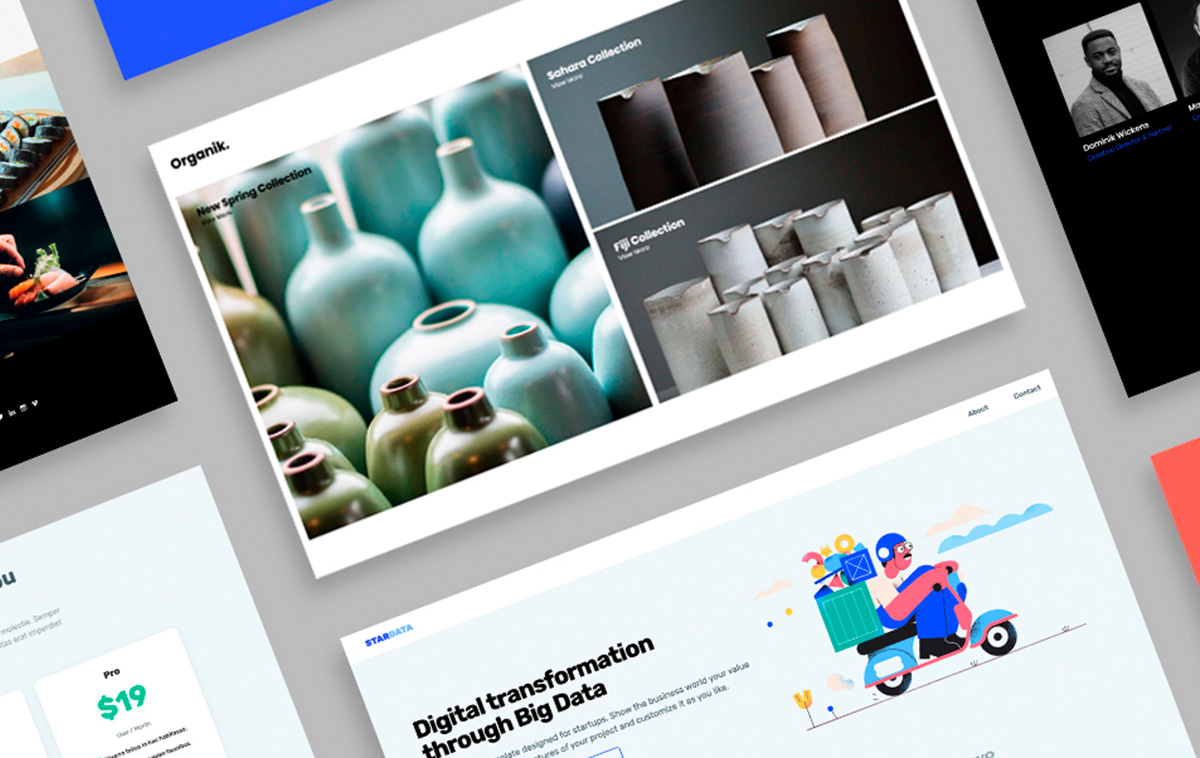Expert Aligned Position Web Design: Elevate Your Digital Presence with Our Professional Services
Expert Aligned Position Web Design: Elevate Your Digital Presence with Our Professional Services
Blog Article
The Finest Sorts Of Website Design to Improve Customer Experience and Interaction
In the ever-evolving landscape of electronic communication, the performance of Web style dramatically impacts individual experience and engagement. Various style techniques, such as minimal, receptive, and interactive formats, each deal unique advantages that can provide to diverse individual demands.
Minimal Web Layout
As electronic landscapes come to be increasingly chaotic, minimal website design has emerged as a powerful method to enhancing user experience. This style approach focuses on simpleness, concentrating on necessary components while eliminating unnecessary interruptions. By utilizing ample white space, uncomplicated navigating, and a minimal shade palette, minimalist style cultivates quality and routes individual attention to key material.
The core concept of minimalist website design is to produce a seamless communication for users. By reducing cognitive lots, individuals can swiftly grasp details without feeling bewildered. This direct approach not just enhances use but also urges involvement, as site visitors are more most likely to check out a website that is easy and visually enticing to navigate.
In addition, minimal style commonly highlights typography and images, using these elements tactically to convey messages properly. This focus on essential elements can enhance brand identification and produce a memorable customer experience. Fundamentally, minimalist Web layout is not just a trend; it is a thoughtful approach that acknowledges the significance of user-centered layout. By removing peripheral aspects, designers can create an extra engaging, efficient, and pleasurable Web experience for all individuals.
Responsive Web Layout
In today's diverse electronic environment, receptive website design has actually become vital for producing a smooth user experience across a multitude of gadgets. As customers access web sites on smartphones, desktops, laptop computers, and tablets, the capacity of a website to adjust its design and content to different display dimensions and resolutions is vital.
Responsive Web style uses adaptable grids, photos, and CSS media queries to ensure that Web content exists optimally, regardless of the tool utilized. This approach not just boosts the aesthetic charm of a site however likewise dramatically boosts usability. Users are more probable to involve with a website that provides a constant experience, as it removes the aggravation of needing to focus or scroll exceedingly.
By embracing responsive design, organizations can boost their presence and get to a wider audience. In recap, receptive Web layout is an essential method that improves individual experience, engagement, and overall satisfaction.
Interactive Web Design
Receptive Web layout prepares for enhancing individual experience, but interactive website design takes this a step even more by involving users in a much more dynamic means - Aligned Position Web Design. By including aspects such as animations, clickable prototypes, and real-time comments, interactive Web style astounds users, attracting them right into a richer browsing experience
This strategy not only cultivates involvement but also encourages customers to discover content actively as opposed to passively consuming it. Strategies such as gamification, where customers make incentives for finishing tasks, can considerably enhance the time invested on a site and boost total satisfaction. Interactive attributes can simplify intricate information, making it much more digestible and enjoyable.

Integrating interactive style aspects can additionally result in greater conversion prices, as individuals are most likely to involve with a site that proactively includes them. Aligned Position Web Design. Eventually, interactive website design changes user experiences right into remarkable trips, guaranteeing that visitors return time after time
Flat Layout
Characterized by its minimalistic approach, flat style highlights simpleness and functionality, removing unnecessary elements and focusing on vital attributes. This layout approach focuses on usability, ensuring that individuals can browse user interfaces easily and efficiency. By employing a tidy aesthetic, level style removes the mess frequently located in a lot more luxuriant styles, therefore enhancing individual emphasis on material and functionality.
The trademark of level layout depends on its use strong colors, simple typography, and geometric forms. These elements add to an aesthetically appealing interface that is both approachable and contemporary. Furthermore, flat style cultivates a sense of quality, enabling customers to discern vital activities and info without interruption.
Additionally, flat design is especially efficient in receptive Web style, as its simpleness converts well Related Site throughout various devices and display dimensions. The lack of intricate structures and gradients reduces filling times, which is vital for keeping individual interaction. As digital landscapes proceed to evolve, level design remains a pertinent selection for creating easy to use web sites that improve general experience. By concentrating on essential attributes, level layout not only satisfies individual requirements yet also urges smooth interaction, making it an essential element of effective website design approaches.
Flexible Website Design
Flexible Web design personalizes the individual experience by creating multiple dealt with designs customized to various screen sizes and devices. Unlike receptive layout, which fluidly changes a solitary layout, adaptive layout utilizes unique layouts for specific breakpoints, making sure optimum discussion on numerous platforms. This technique permits designers to focus on the distinct attributes of each gadget, improving use by delivering specifically what individuals require based on their context.
One of the main benefits of flexible Web style is its capability to maximize lots times and efficiency. By serving tailored content and photos that fit the user's tool, internet sites can minimize information use and enhance loading rates. This is especially helpful for individuals with slower connections or limited information strategies.
In addition, adaptive style facilitates a much more regulated and consistent branding experience. Considering that developers create several formats, they can guarantee that the aesthetic elements align with the brand name's identity across various systems - Aligned Position Web Design. website link This causes a natural user experience, improving involvement and promoting user retention
Final Thought
Minimal design fosters clarity and focus, while receptive layout makes sure flexibility throughout different gadgets, advertising access. Jointly, these design comes close to contribute to the creation of straightforward atmospheres that not just improve satisfaction but also drive higher conversion prices, underscoring their crucial significance in modern Web design methods.

Minimalist design promotes clearness and focus, while receptive style makes certain adaptability throughout various devices, promoting access. Collectively, these style comes close to contribute to the development of easy to use atmospheres that not just boost complete satisfaction however likewise drive higher conversion prices, underscoring their vital value in contemporary Web design strategies.
Report this page